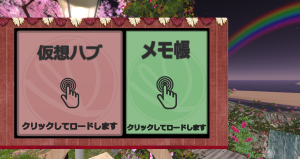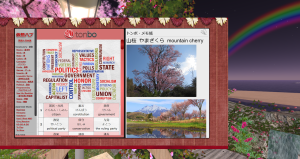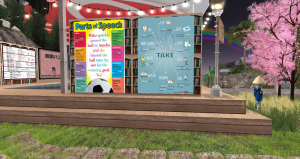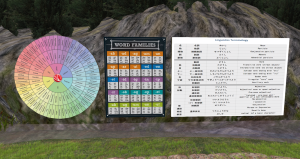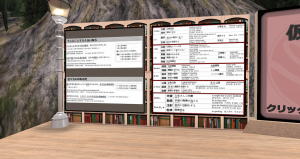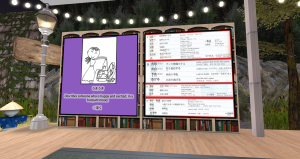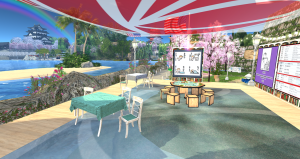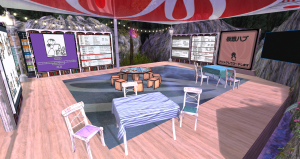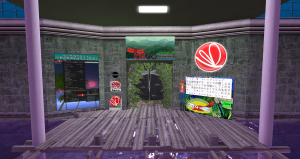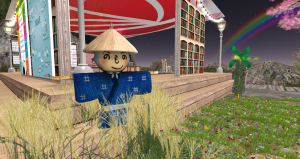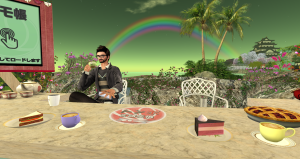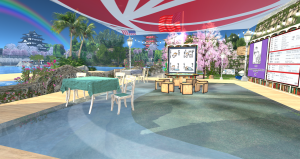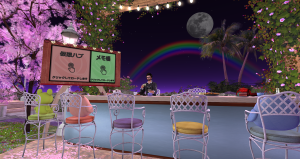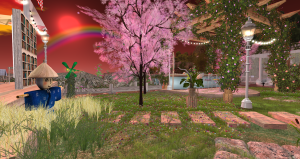Stacy: Is this a picture of your family?
Ellen: Yes, this is my family.
Stacy: Who is this?
Ellen: This is my brother, Sam. Do you have any brothers?
Stacy: Yes, I have two brothers. Their names are Alex and John.
Ellen: Oh! You have more brothers than I do. But these are my two sisters. Their names are Ann and Julie.
Stacy: I see. Julie is taller than Ann.
Ellen: Yes, and Julie is three years older than Ann.
Stacy: And these are your parents?
Ellen: Yes, this is my father. His name is Harry. My mother’s name is Judy.
Stacy: Oh, I see they both have brown hair.
Ellen: Yes, but my father’s hair is darker than my mother’s.
Stacy: Thank you for showing me your family.
英会話 – My Family
Talking to a new friend at school.
Student 1: What’s your family like?
Student 2: I have a very big family. A mom, a dad, a grandma, two grandpas, an older brother, two younger sisters, one dog, and one goldfish.
Student 1: Wow, that is big! Do you live in a house or an apartment?
Student 2: We live in a house. Our grandparents live far away. What about your family? Do you have any brothers or sisters?
Student 1: I’ve got a small family. It’s just my mom, my younger sister, my cat, and me. We live in an apartment in the center of town.
Student 2: What does your mom do?
Student 1: She’s a lawyer. She is thirty years old and she works very hard for us.
Student 2: It sounds like you have a nice family.
Student 1: You too, maybe I can meet them sometime!
Student 2: Sure, I want to meet your cat too!
Student 1: Okay!
英会話 – Making a new friend
Jon: Hi, how are you?
Dasha: I’m fine. What’s your name?
Jon: I’m Jon, and yours?
Dasha: My name’s Dasha, nice to meet you.
Jon: Nice to meet you too. Where are you from?
Dasha: I’m from Ukraine. Where are you from?
Jon: I’m from Australia.
Dasha: What language do you speak in Australia?
Jon: We speak English. What language do you speak in Ukraine?
Dasha: We speak Ukrainian and Russian.
Jon: Very interesting! How old are you?
Dasha: I’m 16, and you?
Jon: I’m 14. You speak English very well!
Dasha: Thank you, I study it in school.
Jon: Well, I have to go. I’ll talk to you later.
Dasha: Ok, see you soon!
tonbo cafe
Welcome to tonbo cafe in Second Life! The purpose of this virtual environment is to meet people and do cultural exchange activities between English and Japanese speakers. Knowing Japanese is very beneficial when visiting as most visitors speak very little English and a whole lot of Japanese. I make it a point to speak in both languages when necessary. First in English, then quickly into Japanese. That way everybody participating understands one another. Beyond helping everyone understand the conversation, this also provides valuable interpretation experience. For those who can’t do this, I help interpret for them too!

At the front bar, we have a couple of useful tools available. First is the Virtual Hub, which provides various vocabulary lists and useful study materials. Then there is the memo pad, which is used to take notes and display pictures for everyone to refer to while we are talking.
In the back, we have a library, a game board, and a TV. The library has various study materials. You can study both Japanese and English here. A larger scale Virtual Hub is located here as well. The game board can play several different card games like a version of skip-bo and monopoly. There is also a TV where videos can be watched.
I tried my best to make tonbo cafe look as relaxing and inviting as possible. Right now we have a cherry blossom spring theme with various times of day that slowly pass by. There are birds chirping with flowing water sounds in the background. Dragonflies are dancing in the air, while the sun dazzles on the endless ocean view in front of all the guests.
If you haven’t been to tonbo cafe lately, please come stop by sometime!
Guide – Particle 「ので」
The ので grammar particle is used to indicate a reason or cause-and-effect relationship between two clauses in Japanese. It can be translated as “because” or “due to” in English. The particle is a combination of the possessive particle の and the particle で, which indicates the means or method by which something is done.
The ので particle is often used in situations where the speaker wants to explain the reason for something or to give an excuse for a particular action or behavior. Here are some examples:
明日はテストがあるので、今晩は勉強します。 (Ashita wa tesuto ga aru node, konban wa benkyou shimasu.)
I have a test tomorrow, so I will study tonight.雨が降っているので、外に出かけられません。 (Ame ga futte iru node, soto ni dekakeraremasen.)
It’s raining, so I can’t go out.彼女は風邪をひいたので、今日は休みます。 (Kanojo wa kaze wo hiita node, kyou wa yasumimasu.)
She caught a cold, so she’s taking the day off.車が壊れたので、会社に遅れてしまいました。 (Kuruma ga kowareta node, kaisha ni okurete shimaimashita.)
My car broke down, so I was late for work.お金がないので、レストランに行けません。 (Okane ga nai node, resutoran ni ikemasen.)
I can’t go to a restaurant because I don’t have any money.
Unlike the conjunction が, which can also be used to express cause and effect, the ので particle implies a stronger causal relationship between the two clauses.
Overall, the ので particle is a useful tool for expressing causal relationships in Japanese, and it’s important to understand its usage to convey meaning accurately in conversations and written communication.
Guide – Particle 「のに」
The particle のに (noni) is a common grammar particle in Japanese that is used to express a contrast between the expected outcome and the actual outcome of a situation. It is often translated as “although,” “despite,” or “even though” in English. Here are some examples:
彼女は疲れていたのに、昨日遅くまで働きました。
Even though she was tired, she worked late yesterday.私はお金を貯めていたのに、急に旅行に行くことになりました。
Although I was saving money, I suddenly decided to go on a trip.
In these examples, のに (noni) is used to express a contrast between the expected outcome (being tired, saving money, and studying) and the actual outcome (working late, deciding to go on a trip, and failing the test).
The particle のに (noni) can also be used to express a sense of regret or disappointment. In this context, it is often translated as “if only” or “I wish.” Here are some examples:
もう少し早く来てくれたら良かったのに。
I wish you had come a little earlier.昨日のパーティーに行けば良かったのに。
I wish I had gone to the party yesterday.
In these examples, のに (noni) is used to express a sense of regret or disappointment about the past.
Finally, のに (noni) can also be used in a more emphatic way to express surprise or indignation. In this context, it is often translated as “despite the fact that” or “even though.” Here are some examples:
彼は犬を飼っているのに、犬が嫌いです。
Even though he has a dog, he hates dogs.彼女は日本語を勉強しているのに、日本の文化に全然興味がない。
Despite studying Japanese, she has no interest in Japanese culture at all.
In these examples, のに (noni) is used to express surprise or indignation at the contrast between the expected situation (liking dogs or having an interest in Japanese culture) and the actual situation (hating dogs or having no interest in Japanese culture).
In summary, the particle のに (noni) is a versatile grammar particle in Japanese that is used to express a contrast between the expected outcome and the actual outcome of a situation, as well as a sense of regret or disappointment and a more emphatic expression of surprise or indignation.


